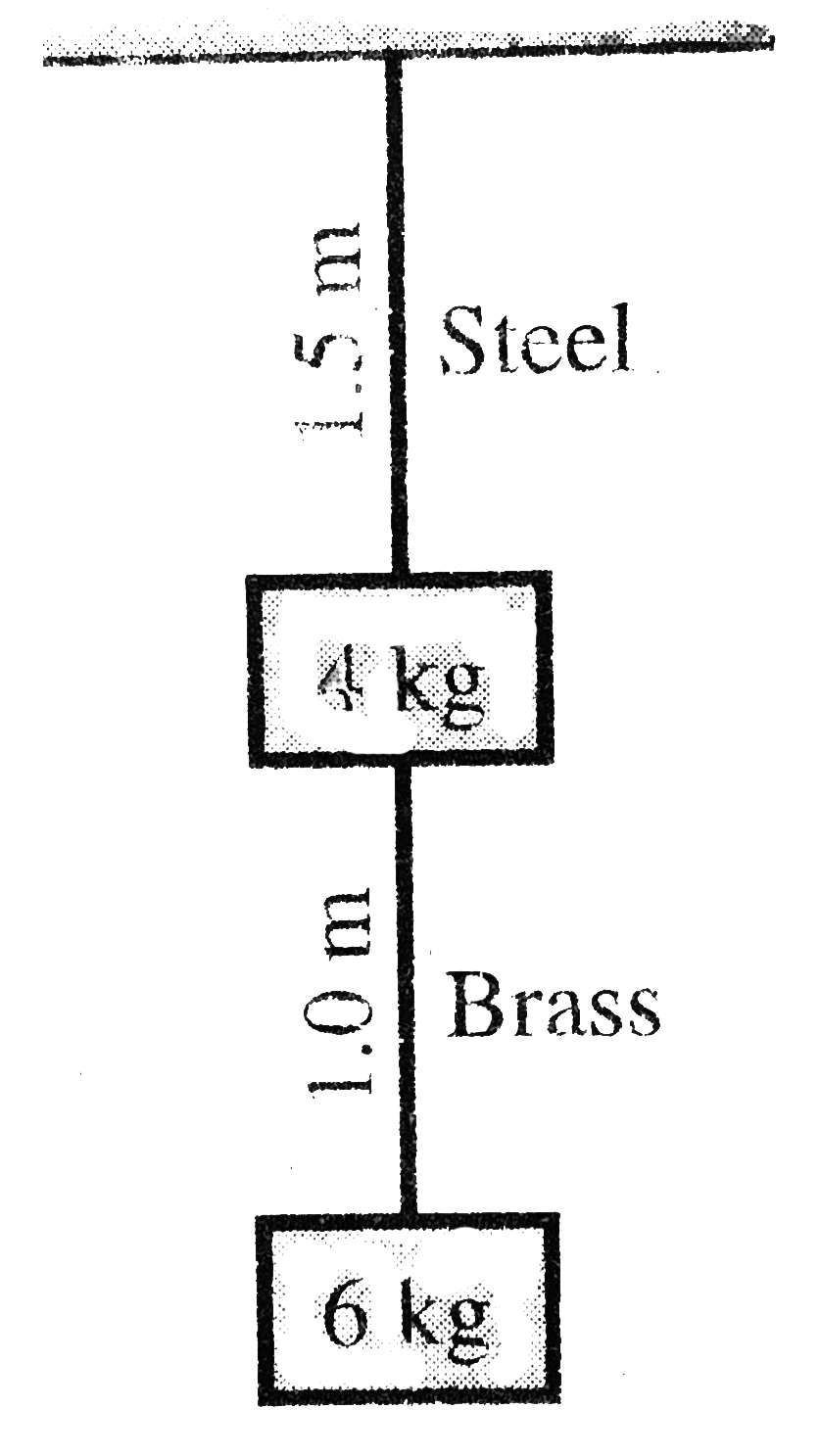Young 's modulus of steel is 2.0×1011Nm/(2). Express it is dynecm2.
The correct Answer is:A, B, C, D
To convert Young's modulus from N/m² to dyne/cm², we can follow these steps:
Step 1: Write down the given value
The Young's modulus of steel is given as:
Y=2.0×1011N/m2
Step 2: Convert Newtons to Dynes
We know that:
1N=105dynes
Therefore, we can convert the Young's modulus from N to dynes:
Y=2.0×1011N/m2×105dynes/N
This gives us:
Y=2.0×1011×105dynes/m2
Step 3: Convert m² to cm²
Next, we need to convert the area from m² to cm². We know that:
1m=100cm
Thus,
1m2=(100cm)2=104cm2
Now we can substitute this into our equation:
Y=2.0×1011×105dynes104cm2
Step 4: Simplify the expression
Now we simplify the expression:
Y=2.0×1011×105104dynes/cm2
This simplifies to:
Y=2.0×1011+5−4dynes/cm2
Y=2.0×1012dynes/cm2
Final Result
Thus, the Young's modulus of steel expressed in dyne/cm² is:
Y=2.0×1012dyne/cm2
---
The Young's modulus of steel is given as:
Y=2.0×1011N/m2
We know that:
1N=105dynes
Therefore, we can convert the Young's modulus from N to dynes:
Y=2.0×1011N/m2×105dynes/N
This gives us:
Y=2.0×1011×105dynes/m2
Next, we need to convert the area from m² to cm². We know that:
1m=100cm
Thus,
1m2=(100cm)2=104cm2
Now we can substitute this into our equation:
Y=2.0×1011×105dynes104cm2
Now we simplify the expression:
Y=2.0×1011×105104dynes/cm2
This simplifies to:
Y=2.0×1011+5−4dynes/cm2
Y=2.0×1012dynes/cm2
Thus, the Young's modulus of steel expressed in dyne/cm² is:
Y=2.0×1012dyne/cm2
Topper's Solved these Questions
- BOOK - DC PANDEY ENGLISHCHAPTER - UNIT AND DIMENSIONSEXERCISE - Assertion And Reason2videos
UNIT AND DIMENSIONS
- BOOK - DC PANDEY ENGLISHCHAPTER - UNIT AND DIMENSIONSEXERCISE - More Than One Correct5videos
UNIT AND DIMENSIONS
- BOOK - DC PANDEY ENGLISHCHAPTER - THERMOMETRY,THERMAL EXPANSION & KINETIC THEORY OF GASESEXERCISE - Level 2 Subjective9videos
THERMOMETRY,THERMAL EXPANSION & KINETIC THEORY OF GASES
- BOOK - DC PANDEY ENGLISHCHAPTER - UNITS, DIMENSIONS & ERROR ANALYSIS EXERCISE - Medical entrances gallery32videos
UNITS, DIMENSIONS & ERROR ANALYSIS
Similar Questions
Knowledge Check
- Question 1 - Select One
Young's modulus of steel is 1.9×1011N/m2 When expressed is CGS units of dynes/cm2 it will be equal to (1N=105dyne,1m2=104cm2)
A1.9×1010B1.9×1011C1.9×1012D1.9×1013 - Question 2 - Select One
The area of a cross-section of steel wire is 0.1cm−2 and Young's modulus of steel is 2x1011Nm−2. The force required to stretch by 0.1% of its length is
A1000 NB2000 NCÂ 4000 ND5000N
What will be the change in interatomic distance ( in Å ) of steel on applying a stress of 109N/m2. The Young's modulus of steel is 2×1011N/m2 and the interatomic distance in steel is 2.8Å.
View SolutionA steel wire 4.0m in length is stretched through 2.0mm.The cross -sectional area of the wire is 2.0mm2.If young's modulus of steel is 2.0×1011N/m2
(a) the energy density of wire,
(b) the elastic potential energy stored in the wire.View SolutionA steel rod 2.5m long is rigidly clamped at its centre C and longitudinal waves are set up on both sides of C by rubbing along the rod . Young's modulus for steel =2×1011N/m2 , density of steel =8000kg/m3

If the clamp of the rod be shifted to its end A and totally four antinodes are observed in the rod when longitudinal waves are set up in it , the frequency of vibration of the rod in this mode isView SolutionTwo wires of diameter 0.25cm, one made of steel and other made of brass, are loaded as shown in the figure. The unloaded length of the steel wire is 1.5m and that of brass is 1.0m. Young's modulus of steel is 2.0×1011Pa and that of brass is 1.0×1011 Pa. Compute the ratio of elongations of steel and brass wires. △lsteel△lbrass=?
 View Solution
View SolutionA steal wire of cross-section area 3×10−6m2 can withstand a maximum strain of 10−3 .Young's modulus of steel is 2×1011Nm−2 .The maximum mass this wire can hold is
View SolutionA steel wire of 4.0 m is stretched through 2.0 mm. The cross - sectional area of the wire is 2.0mm2. If young's modulus of steel is 2.0×1011Nm−2 find (i) the energy density of the wire, (ii) the elastic potential energy stored in the wire.
View Solution

